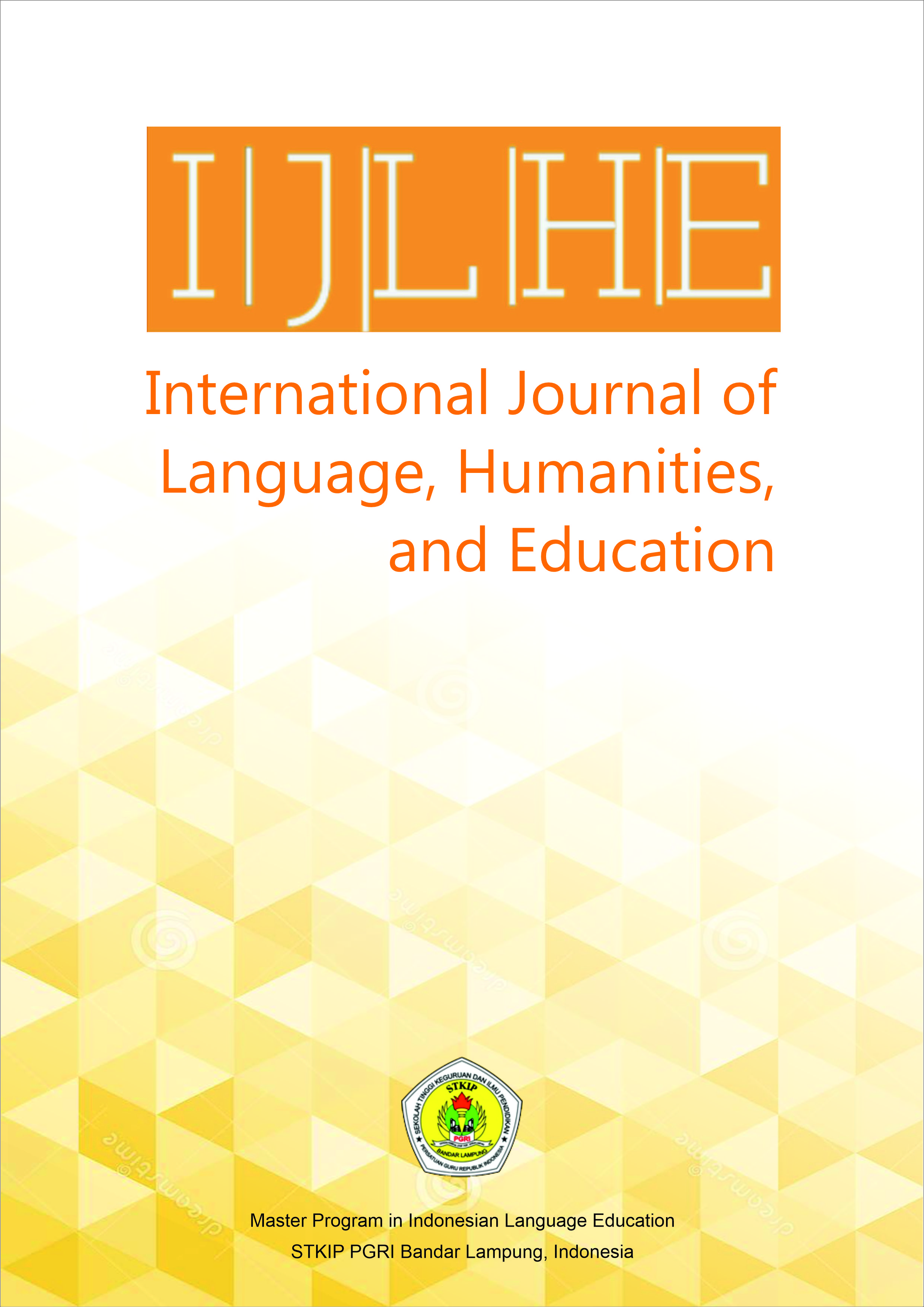Myths and Gender Relations in Short Stories When Mothers Come by Dwi Ratih Ramadhany
DOI:
https://doi.org/10.52217/ijlhe.v8i1.1880Keywords:
Dwi Ratih, Female author, Gender relations, Myth, Short storyAbstract
The short story "When Mother Comes" by Dwi Ratih Ramadhany presents the figure of a mother from three generations who has to grapple with dilemmas in her life, which then shows the gender relations between the characters. Dwi Ratih Ramadhany who is a female writer born in Sampang, Madura who raises many female themes in her work. The short story "When Mother Comes" is told through a simple plot through the arrival of a mother to her child's house, when her child gives birth. This study concludes that there are a number of myths that the Mother character brings as the old generation, to the I, as the new generation. These myths include the myth of 'fighting the mother makes the child go to hell', the myth of 'the baby's urine is put in a jug', the myth 'the breast is infested with jinn and demons so that the child does not want to breastfeed'. Meanwhile, the gender relations that emerge in this short story are divided into two, the first is that perpetuates gender stereotypes, namely, associating domestic tasks with female characters, demonizing female characters as grumpy monsters, positioning male characters as more rational parties in the midst of the absence of these characters in family debates, while the second is breaking gender stereotypes seen in the “I” character who has agency and critical power to question the gender stereotypes imposed on her.
References
Anggraheni, N. (2013). Citraan perempuan dalam kumpulan cerpen Bukan Permaisuri karya Ni Komang Ariani dan saran implementasinya dalam pengajaran sastra di SMA (Doctoral dissertation, Universitas Muhammadiyah Purwokerto).
Bryman, A. (2012). Social research methods. Oxford University Press.
Connell, R. W. (2009). Gender in world perspective. Polity Press.
Eriyanto. (2013). Analisis naratif: Dasar-dasar dan penerapannya dalam analisis teks media. Prenada Media Group.
Ida, R. (2016). Metode penelitian studi media dan kajian budaya. Kencana.
Irmawati, S. E., Chamalah, E., & Turahmat, T. (2017). Profeminis dan kontrafeminis tokoh Hanah dalam cerpen Telapak Kaki yang Menyimpan Surga karya Ni Komang Ariani. Jurnal Pendidikan Bahasa Indonesia, 5(1), 57–67. https://doi.org/10.30659/j.5.1.57-67
Kracauer, S. (1952–1953). The challenge of qualitative content analysis. The Public Opinion Quarterly, 16(4), 631–642. https://www.jstor.org/stable/2746123
Nisa, A. (2018). Budaya patriarki Bali menurut perspektif Ni Komang Ariani dalam kumpulan cerpen Bukan Permaisuri. Nuansa Indonesia, 20(2), 133–146. https://doi.org/10.20961/ni.v20i2.38086
Rahmawati, W. (2017). Konstruksi gender dalam kumpulan cerita pendek karya Emha Ainun Najib. Jurnal Bahasa dan Sastra Indonesia, 6(5), 650–665. https://ejournal.umm.ac.id/index.php/kembara/index
Ramadhany, D. R. (2020, January 20). Ketika ibu datang. Intersastra. https://intersastra.com/fiksi-fiction/whenmothercame?rq=when%20mother%20comes
Rokhmansyah, A. (2016). Pengantar gender dan feminisme: Pemahaman awal kritik sastra feminisme. Garudhawaca.
Rusli, H., Safhida, M., Erdiana, N., & Wildan, W. (2022). Indonesian female writers’ perspective toward Acehnese women: A gynocritic study. Lensa: Kajian Kebahasaan, Kesusastraan, dan Budaya, 12(1), 148–165. http://jurnal.unimus.ac.id/index.php/lensa
Sandelowski, M. (2004). Using qualitative research. Qualitative Health Research, 14(10), 1366–1386. https://doi.org/10.1177/1049732304269672
Suyadnya, I. W., & Kholifah, S. (2018). Catatan pembuka penelitian kualitatif. In S. Kholifah & I. W. Suyadnya (Eds.), Metode penelitian kualitatif: Berbagi pengalaman dari lapangan (pp. 1–28). Raja Grafindo Persada.
Wang, C., Qu, H., & Hsu, M. K. (2016). Toward an integrated model of tourist expectation formation and gender difference. Tourism Management, 54, 58–71. https://doi.org/10.1016/j.tourman.2015.10.009














